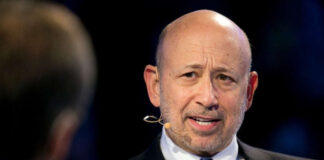JANUARY 30, 2022

WASHINGTON, D.C. — Consumers would be able to easily compare rates for home and mobile broadband service under plans given an initial green light by the Federal Communications Commission on Thursday.
The proposed new rule would require broadband providers such as AT&T Inc. and Comcast Corp. to show consumers standardized price data similar to the window stickers on new cars and the nutrition labels on packaged food.
“We want to make it easier for consumers to compare their options and understand just what they are signing up for,” said FCC Chairwoman Jessica Rosenworcel.
The FCC voted 4-0 to seek public comment on the proposed disclosure rule, with both Republicans and Democrats in support. The proposal implements a directive from Congress.
Brendan Carr, a Republican FCC Commissioner, endorsed the effort to inform consumers, but cautioned that the agency should be careful not to make the labels overly complex.
“It’s important that we do so in a manner that will promote clarity and not confusion,” Mr. Carr said.
Under the proposal, internet service labels would include details on prices, data allowances, speeds, and the difference between introductory and regular rates. They would have to be prominently displayed at the time of sale to consumers buying either home broadband or mobile broadband plans.
The FCC is also asking for comment on the labels’ content as well as how the labels must be displayed—for example, whether companies will have to show them prominently on their marketing websites or simply provide a link. The FCC will take public comments on the proposal before completing the rules in the coming months.
Consumer advocates say that more information will help consumers fully understand costs of various plans, and to compare companies’ offerings on an apples-to-apples basis.
When companies market their plans, often “the big price is the promotional rate—the fine print is the rate once the promotion expires,” said Jonathan Schwantes, senior policy counsel at the nonprofit Consumer Reports, which has advocated for the labels. “A lot of consumers miss those fees in the fine print.”
FCC Commissioner Geoffrey Starks, a Democrat, said Thursday the labels “will also promote greater innovation, more competition, and lower prices for broadband—wins for the entire broadband ecosystem.”
Others question how much the labels will affect prices. Former FCC official Blair Levin said consumers motivated to shop around can do so already. Mr. Levin, now an analyst at New Street Research, said the costs of switching providers, such as new hardware and connection fees, also act as a disincentive.
“Bottom Line: We don’t think the transparency will prove to be deflationary,” Mr. Levin said in a note to clients this week.
The FCC late in the Obama administration adopted a similar price-disclosure label, though displaying it was voluntary and the idea drew objections from some in the industry.
The labels could be burdensome and lead to overly simplistic disclosures that “may not reflect the reality of how services are offered,” NCTA, a cable industry group formerly known as the National Cable & Telecommunications Association, told the FCC in 2015.
The Trump administration sidelined the price-comparison plans, but Congress last year passed legislation ordering the FCC to require the display of “broadband consumer labels” based on the ones described in the Obama-era rule.
The NCTA said this week that its members are “committed to providing consumers with relevant information about broadband services” and that it looks forward to working with the FCC on implementing them.
The FCC’s leadership also says it has no plans to directly regulate broadband rates, as many companies feared after President Biden took office.
Courtesy/Source: WSJ

































































































